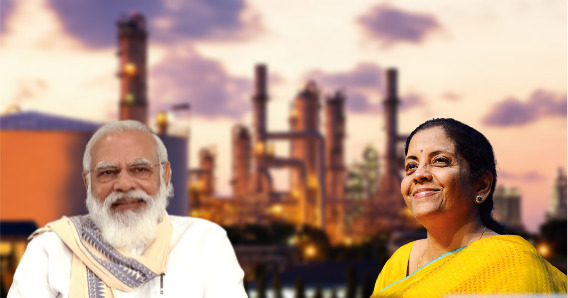Lehman Brothers filed for bankruptcy on September 15, 2008, which was subsequently the beginning of the Great Recession that nearly upended the economy of the entire world. However, six days before the fourth-largest investment bank of the USA with 25,000 employees, $639 billion in assets, and $613 billion in liabilities collapsed, global rating agency, Standard & Poor’s (S&P) had accredited ‘A’ rating to the company. Moody’s waited even longer, downgrading Lehman one business day before it collapsed. The movie ‘The Big Short’ starring Steve Carrell addressed the issue as to why the credit agencies continued to give inflated ratings to the nearly bankrupt companies. The answer was simple, the companies could have thrown their money to a different rating agency and garnered the required ratings.
Even after failing on the biggest stage, the supposed sharp-pencilled bunch of tuxedo-wearing global analysts of rating agencies continue to rig the ratings based on political affiliations and personal profits. And the biggest target of them continues to be India.
Fitch ratings with its negative outlook and rating
Reportedly, Fitch Ratings has kept India’s sovereign rating unchanged at BBB- with a negative outlook owing to a rise in public debt ratio and uncertainty on debt trajectory. The rating remains unchanged from April this year. Meanwhile, Moody’s, last year had downgraded India’s foreign-currency and local-currency long-term issuer ratings to Baa3 from Baa2, which is the lowest grade for a sovereign.
There’s no beating around the bush that the western world where the majority of the global rating agencies are stationed has a bleak outlook of India, stemming from preconceived notions. To them, India continues to be a third-world country where animal poop on the street is a universal occurrence while people live in shanty, dilapidated kaccha houses.
Indian politicians sold the idea of a bleak India
And to an extent, they cannot be blamed for it, for our superior, intellectual economist political predecessors sold such an idea of India on the global platforms. It is, however, changing with the Modi government at the helm of affairs as the country’s GDP has bounced back sharply, nearly reaching the pre-Covid numbers and the stock index Sensex scaling unprecedented heights, all the whilst government introducing reforms such as Production Linked Incentive (PLI) Scheme under its Aatmanirbhar Bharat campaign.
Read more: What really puts the “sex” in Sensex?
While the rating agencies continue their shoddy work, the investors, both global and domestic, continue to give them the cold shoulder and pump prime the Indian economy.
Indian economy on a rise — increasing FDIs and FPIs
Despite the UN Conference on Trade and Development report stating that global FDI flows plunged by 35 per cent due to COVID, FDI in India increased by 27 per cent to USD 64 billion in 2020 from USD 51 billion in 2019.
Talking about 2020, India has attracted a total FDI inflow of US$ 22.53 billion during the first three months of the financial year that is from April 2021 to June 2021 which is 90 per cent higher as compared to the first three months of 2020-21 (US$ 11.84 billion).
Automobile Industry’ has emerged as the top sector during the first three months of F.Y. 2021-22 with a 27 per cent share of the total FDI Equity inflow followed by Computer Software & Hardware (17%) and Services Sector (11%) respectively.
As reported by TFI, bullish on the health of the economy and expecting rich future dividends, foreign investors are continuing to bet on the Indian market. Reportedly, within the first ten days of September, Foreign Portfolio Investors (FPIs) have poured in a net sum of Rs 7,605 crore in the Indian markets.
While Rs 4,385 crore was pumped into equities, the rest, Rs 3,220 crore was pumped in the debt segment during September 1-9. The investors have picked up from where they left in the previous month as FPIs were net buyers to the tune of Rs 16,459 crore in August as well, with a majority of investment coming in the debt segment.
In layman terms, FPI refers to investing in the financial assets of a foreign country, such as stocks or bonds available on an exchange. The FPI flows are only expected to increase as India presents higher growth opportunities, which the global investors can no longer ignore.
Even after a devastating second wave of the pandemic, the Modi government managed to wade through the testing waters and is now reaping the reward for it. The reform-laden approach has been the cornerstone for this success as investors ignore the doom and gloom ratings of the credit agencies.
Economic Survey 2020-21 called out rating agencies
The government of India fully understands the partisan behaviour of the global rating agencies. Earlier this year in January, the Modi government released the Economic Survey 2020-21. The survey, right off the bat criticizes the low ratings of India and China, with historical data and references.
The Economic Survey reads, “Never in the history of sovereign credit ratings has the fifth largest economy in the world been rated as the lowest rung of the investment grade (BBB-/Baa3). Reflecting the economic size and thereby the ability to repay debt, the fifth largest economy has been predominantly rated AAA. China and India are the only exceptions to this rule – China was rated A-/A2 in 2005 and now India is rated BBB-/Baa3. Do the fundamentals that supposedly drive sovereign credit ratings rationalize this historical anomaly? In this chapter, the Survey asks this important question and answers a resounding No!”
Today countries like the United States raise debt at interest rates near zero while India, owing to the prejudice of the rating agencies has to pay above 5 per cent interest rates. However, such has been the groundwork laid down by the Modi government that unperturbed foreign investors continue to pump the liquid cash.
On the domestic front, the GST collection for August crossed the one lakh crore mark after doing so in July as well. The gross GST revenue collection stood at Rs 1,12,020 crore which is 30 per cent higher than the previous year – indicating that the economy was indeed recovering at a faster pace.
All the indicators suggest that the Indian economy is recovering at a miraculous pace and if nothing, the growing trust of the global investors to pump their money into Indian markets is a solid endorsement of PM Modi’s economic policy. The global rating agencies can continue to scribble their unintelligible, toddler ratings — trying to remain relevant.





























